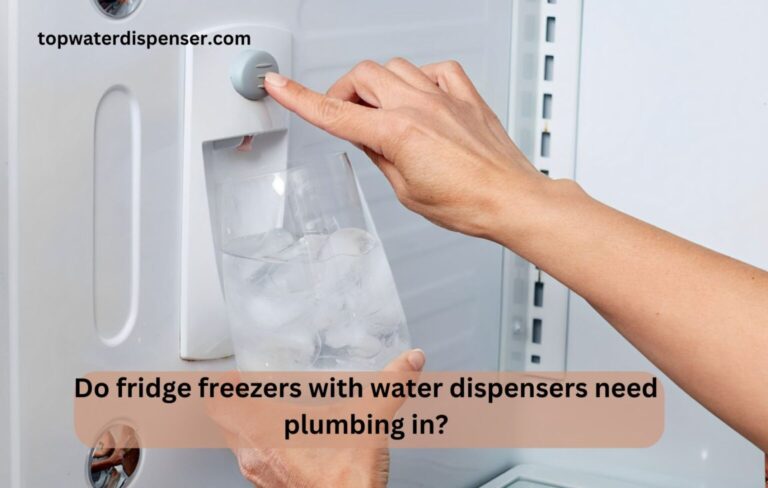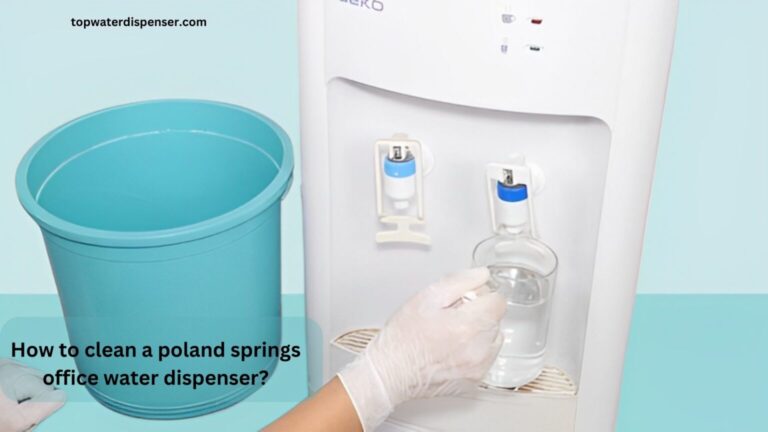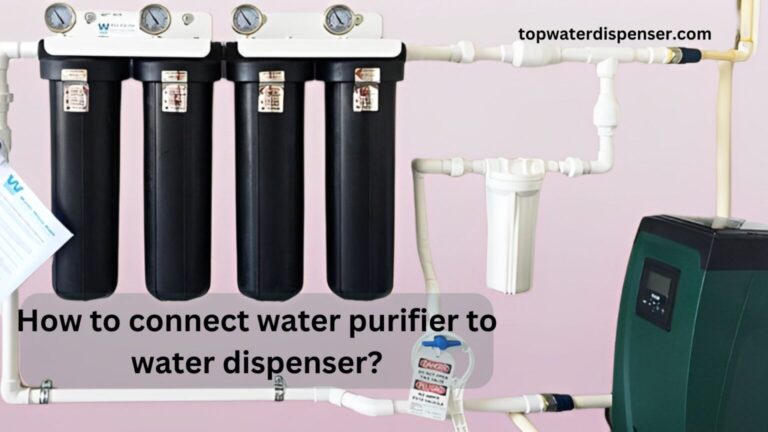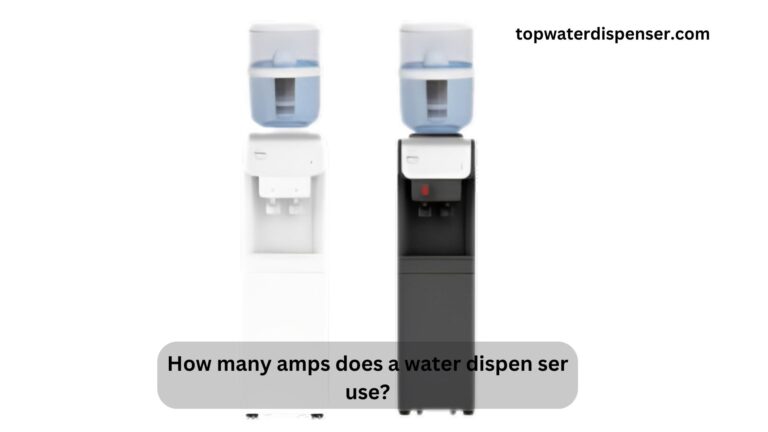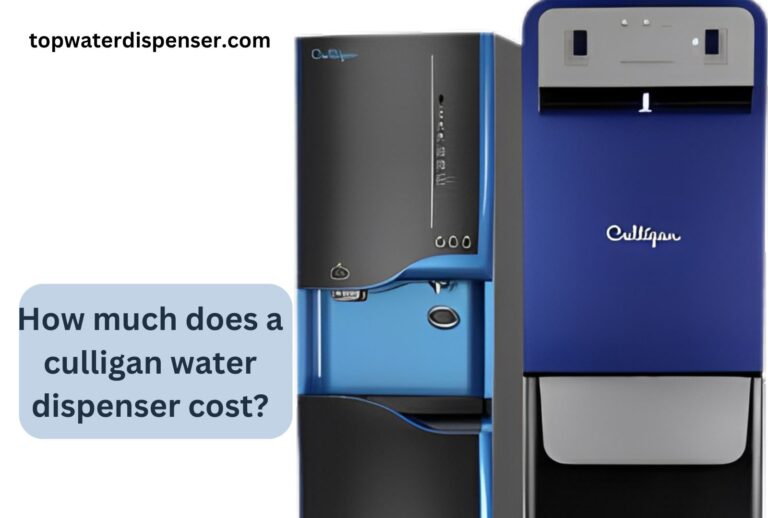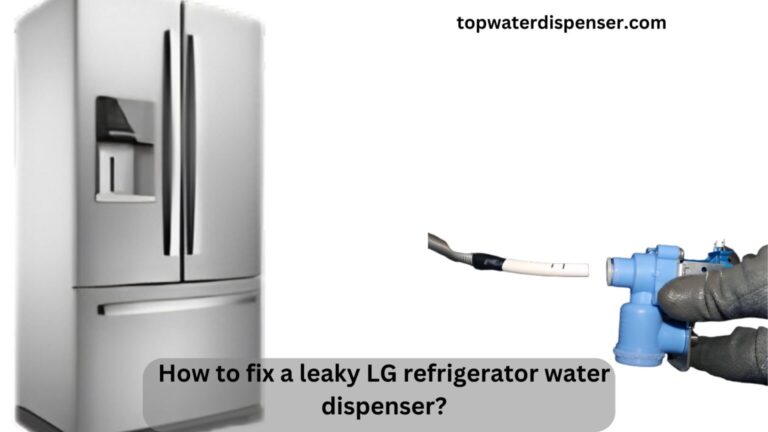How To Repair Water Dispenser Not Cooling?
Are you having a tough time trying to figure out How To Repair Water Dispenser Not Cooling?
If the frustrating task of unsuccessful attempts at fixing your broken water dispenser is getting you down, never fear! We have compiled some expert tips and tricks that are sure to help get your appliance back up and running as quickly as possible.
Let us help get yours back up and running again quickly and easily so, you must reads the full articles!
How To Repair Water Dispenser Not Cooling? ( 9 Steps )
To know completly about How To Repair Water Dispenser Not Cooling? Must read the following.

Step 1. Unplug the Dispenser:
The first step is to close the valve of water and then unplug your water cooler from the power outlet. This is crucial in ensuring safety while you carry out the subsequent steps.
Step 2. Inspect the Power Cord:
Next, check the power cord for any damages. If you find any, replacing it may rectify the issue.
Step 3. Clean the Condenser Coils:
check the coils are clean because over time, dust and grime can accumulate on the condenser coils, inhibiting the device’s cooling system. Use a brush cleaning solution or use a vacuum to remove any dust or dirt.
Step 4. Check the Thermostat:
The thermostat is responsible for adjusting the temperature inside the dispenser. If it’s faulty or set too high, the dispenser may fail to cool properly. Adjust it to a lower setting and check if the dispenser cools.
Step 5. Inspect the Compressor:
The compressor presses the refrigerant and circulates it through the coils. If it’s malfunctioning, the dispenser won’t cool. You may need a professional to inspect and fix compressor issues.
Step 6. Look at the Fan:
The fan helps to dissipate heat from the coils. If it’s not rotating, there may be a problem with its motor or blade which needs to be fixed.
Step 7. Examine the Door Seals:
Must check the signs of leakage because faulty door seals can allow cold air to escape, resulting in the dispenser not cooling. Replacing worn-out seals can help restore the cooling function.
Step 8. Check the Water Reservoir:
If the water in the reservoir is not sealed properly, it can prevent the dispenser from cooling. Make sure it is tightly sealed and also check the main water filter in order to keep your water clean.
Step 9. Professional Help:
If none of the above steps works, after plugging it back then it’s best to seek professional assistance. A certified technician can diagnose and fix the problem with the correct tools and expertise.
Topics
The Comprehensive topics related, How To Repair Water Dispenser Not Cooling?
2. What could be causing your water dispenser not to cool properly
There could be several reasons why your water dispenser is not cooling properly. One common issue and common cause is the build-up of dust and grime on the condenser coils, which can inhibit the dispenser’s cooling efficiency. Additionally, faulty parts such as the thermostat, compressor, fan, door seals, or even the water reservoir can also contribute to the cooling problem. It’s crucial to inspect these components and replace them if necessary. However, if all your attempts at troubleshooting don’t yield successful results, it’s best to enlist the help of a professional technician to diagnose and fix the problem.
3. How to troubleshoot the problem using a few simple steps
Troubleshooting your water dispenser cooling issue may initially seem like a daunting task, but by taking it step-by-step, the process can become manageable. Regular maintenance and a keen eye for detail can help identify potential problems early on. Proper inspection of the power cord, condenser coils, thermostat, compressor, fan, door seals, and water reservoir are essential in maintaining the dispenser’s optimal cooling efficiency. Remember, though, that seeking professional assistance is advised when the issue cannot be resolved through basic troubleshooting methods or if the dispenser requires component replacement.
4. Tips on how to properly clean and maintain your water dispenser
Proper cleaning and preventive maintenance of your water dispenser extend its life and efficiency. Regularly clean the dispensing area with a mild soap solution to prevent the growth of bacteria and fungi. Additionally, the drip tray should be cleaned at least once a week to avoid unpleasant odours. The condenser coils, which are crucial for cooling, should be dusted off monthly to boost the dispenser’s performance. It’s also advisable to perform a thorough cleaning of the water reservoir every six months using a vinegar solution to remove any mineral buildup. Finally, always ensure that the door seals are in good condition to prevent cold air from escaping.
5. DIY fixes that can help repair an unresponsive water dispenser
Before delving into the DIY fixes, it’s crucial to remember that safety should always be your number one priority. Always unplug your water dispenser before initiating any repairs. Some DIY solutions you can attempt include inspecting the power cord for any damages, cleaning the condenser coils, adjusting the thermostat, examining the compressor, checking the fan, replacing worn-out door seals, and ensuring the water reservoir is tightly sealed. However, if these solutions do not rectify the issue, it’s strongly advised to seek professional assistance to avoid exacerbating the problem.
6. Warning signs of a more serious issue that requires professional attention
Several red flags indicate your water dispenser might have a serious issue requiring professional attention. Unusual sounds such as clicking or buzzing noises, evidence of leaking water, or the dispenser failing to cool despite adjusting the thermostat and cleaning the condenser coils are all worrisome signs. Additionally, if your dispenser frequently trips your circuit breaker, it denotes a severe electrical issue. Finally, if your dispenser fails to function even after replacing faulty components, it’s time to call a certified technician.
7. Common misconceptions about fixing a broken water dispenser
One common misconception about How To Repair Water Dispenser Not Cooling? is that every issue can be rectified through DIY procedures. While simple troubleshooting can address minor problems, intricate components like the compressor or the fan motor often require a professional’s expertise. Another false belief is that keeping the water dispenser running constantly enhances its cooling efficiency. On the contrary, overuse can lead to wear and tear of components and increase power consumption. It’s important to understand that proper maintenance, regular cleaning, and timely professional checks can contribute significantly towards the longevity and performance of your water dispenser.
Conclusion
In conclusion How To Repair Water Dispenser Not Cooling?, while it may be daunting to deal with a malfunctioning water dispenser, understanding the potential causes and corrective steps can make the task manageable. Regular maintenance, timely cleaning, and keen observation can help detect issues early and ensure the longevity and optimal performance of your water dispenser. Remember, while minor issues may be resolved through DIY procedures, certain problems necessitate the expertise of a professional. In such instances, seeking professional help can prevent further damage and ensure the safety and functionality of your appliance. Understanding these aspects helps debunk common misconceptions and promotes proper care and usage of your water dispenser.
FAQs
There are also some frequently asked questions related How To Repair Water Dispenser Not Cooling?
Ensure that the water cooler is fully plugged in. A loose connection or accidental unplugging of the system is a simple and common cause of electricity not reaching the system. Check the switches on the rear of the cooler. Confirm that they are flipped into the “on” position.
Ensure the dispenser is plugged in and the cooling switch is on. Regularly clean the condenser coils and check the thermostat settings. If problems persist, seek professional assistance.
To troubleshoot cold water issues in a dispenser, check the thermostat setting, clean the condenser coils, inspect the compressor and fan, and ensure door seals and water reservoirs are functioning properly.
To troubleshoot cold water issues in a dispenser, check the thermostat setting, clean the condenser coils, inspect the compressor and fan, and ensure door seals and water reservoirs are functioning properly.
Your cooler may not be cooling due to a variety of reasons such as dust accumulation on condenser coils, faulty thermostat settings, issues with the compressor or fan, or worn-out door seals.


